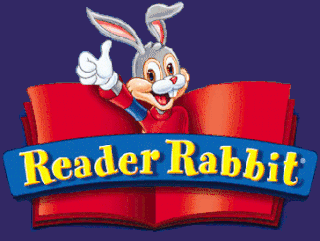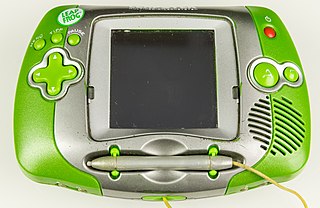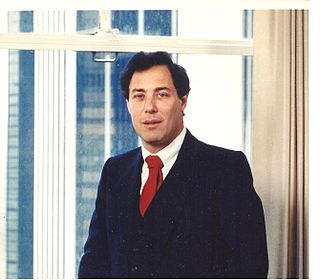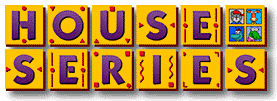
The Intellivision is a home video game console released by Mattel Electronics in 1979. The name is a portmanteau of "intelligent television". Development began in 1977, the same year as the launch of its main competitor, the Atari 2600. In 1984, Mattel sold its video game assets to a former Mattel Electronics executive and investors, eventually becoming INTV Corporation. Game development ran from 1978 to 1990, when the Intellivision was discontinued. From 1980 to 1983, more than 3.75 million consoles were sold. As per Intellivision Entertainment the final tally through 1990 is somewhere between 4.5 and 5 million consoles sold.
The Learning Company (TLC) was an educational software company founded in 1980 in Palo Alto, California and headquartered in Fremont, California. The company produced a grade-based line of learning software, edutainment games, and productivity tools. Its titles included the flagship series Reader Rabbit, for preschoolers through second graders, and The ClueFinders, for more advanced students. The company was also known for publishing licensed educational titles featuring characters such as Arthur, Scooby-Doo, Zoboomafoo, and Caillou.
Tiger Electronics Ltd. is an American toy manufacturer best known for its handheld electronic games, the Furby, the Talkboy, Giga Pets, the 2-XL robot, and audio games such as Brain Warp and the Brain Shift. When it was an independent company, Tiger Electronics Inc., its headquarters were in Vernon Hills, Illinois. It has been a subsidiary of Hasbro since 1998.

LeapFrog Enterprises, Inc. is an educational entertainment and electronics company based in Emeryville, California. LeapFrog designs, develops, and markets technology-based learning products and related content for the education of children from infancy through grade school. The company was founded by Michael Wood and Robert Lally in 1994. John Barbour is the chief executive officer of LeapFrog.

The Speak & Spell line is a series of electronic hand-held child computers by Texas Instruments that consisted of a TMC0280 linear predictive coding speech synthesizer, a keyboard, and a receptor slot to receive one of a collection of ROM game library modules. The first Speak & Spell was introduced at the summer Consumer Electronics Show in June 1978, making it one of the earliest handheld electronic devices with a visual display to use interchangeable game cartridges. The company Basic Fun brought back the classic Speak & Spell in 2019 with some minor changes.

The LeapPad is a range of tablet computers developed for children, specifically of the ages 3-9. Various models of the LeapPad have been developed by LeapFrog Enterprises since 1999.

Pixter was among the first portable handheld touch screen drawing toys for children invented by Rehco, LLC and marketed by Fisher Price from 2000 through 2007. Pixter was pre-programmed with fun content and repeatable play. Pixter also could accept cartridge-based games and other activities. Pixter was originally marketed successfully with a black-and-white display but later was upgraded to a color display.

2-XL is an educational toy robot that was marketed from 1978–1981 by the Mego Corporation, and from 1992–1995 by Tiger Electronics. 2-XL was the first "smart-toy" in that it exhibited rudimentary intelligence, memory, gameplay, and responsiveness. 2-XL was infused with a "personality" that kept kids focused and challenged as they interacted with the verbal robot. Learning was enhanced via the use of jokes and funny sayings as verbal reinforcements for performance. 2-XL was heralded as an important step in the development of toys, particularly educational ones. 2-XL won many awards, and Playthings, a toy industry magazine, placed 2-XL on its 75th anniversary cover as one of the industry's top-ten toys of all time. The 2-XL name is a pun of the phrase "to excel".

Reader Rabbit is an educational video game franchise created in 1984 by The Learning Company. The series is aimed at children from infancy to the age of nine. In 1998, a spiritual successor series called The ClueFinders was released for older students aged seven to twelve.

The Leapster Learning Game System is an educational handheld game console aimed at 4- to 10–11-year-olds, made by LeapFrog Enterprises. Its games teach the alphabet, phonics, basic math, and art and animal facts to players. Along with a directional pad, the system features a touchscreen with a stylus pen that enables young users to interact directly with the screen. The Leapster was released in October 2003.

Fisher-Price, Inc. is an American company that produces educational toys for infants, toddlers and preschoolers, headquartered in East Aurora, New York. It was founded in 1930 during the Great Depression by Herman Fisher, Irving Price, Helen Schelle, and Margaret Evans Price.

Educational toys are objects of play, generally designed for children, which are expected to stimulate learning. They are often intended to meet an educational purpose such as helping a child develop a particular skill or teaching a child about a particular subject. They often simplify, miniaturize, or even model activities and objects used by adults.

Reading is the process of taking in the sense or meaning of letters, symbols, etc., especially by sight or touch.

The Mattel Children's Discovery System is an early electronic educational toy product released by Mattel in 1981. The Children's Discovery System was targeted toward children aged 6 to 11 and mimicked the look of a contemporary consumer-grade computer.
Lego Education is a Lego theme designed specifically for schools that concentrates sets that can be used by education institutions and includes sets that focus on Duplo and Technic themes and contain larger amounts of pieces. The theme was first introduced in 1999.

Michael J. Freeman is an American inventor who works in trend analysis, advanced behavioral systems, programming of smart toys, cable television and robotics. He was a professor at three American universities and a consultant to business and governments.

Early Learning House or simply the House Series is a collection of four main educational video games and two compilations for the Windows and Macintosh platforms, developed by Theatrix Interactive, Inc. and published by Edmark software. Each different game focuses on a particular major learning category with selectable skill settings for preschooler, kindergarten and elementary learners. Millie's Math House (1992) on mathematics, Bailey's Book House (1993) on language, Sammy's Science House (1994) on science, and Trudy's Time and Place House (1995) on history and geography. A spin-off, Stanley's Sticker Stories (1996), sees players create animated storybooks with the series' characters. Millie & Bailey Preschool and Millie & Bailey Kindergarten each contain the combined activities from two of the four software products. In addition the programs can be configured by an adult mode to suit students with special needs. Most of the activities in every game have two modes, one to allow learners to explore and try it out for themselves and the other for learners to follow specific tasks set by the game characters. Learners also have the option to print pictures of creative activities and record sounds in phonics activities. Later the games were re-developed by Houghton Mifflin Harcourt Learning Technology and re-published by The Learning Company with newer graphics and additional activities.
Madeline is a series of educational point-and-click adventure video games which were developed during the mid-1990s for Windows and Mac systems. The games are an extension of the Madeline series of children's books by Ludwig Bemelmans, which describe the adventures of a young French girl. The video-game series was produced concurrently with a TV series of the same name, with characters and voice actors from the show.
The Arthur video games franchise was a series of learning and interactive story video games based on the American-Canadian children's TV show Arthur. The games were released in the 1990s and 2000s for PlayStation and Windows and Mac OS computers.

MobyMax is an online education program used by grades K-8. MobyMax includes 27 subjects including math, reading, phonics, language, vocabulary, spelling, writing, science, social studies, preparations for state examinations, and more. The program also provides classroom tools such as assessments and progress monitoring and offers games, badges, and contests for the students.















